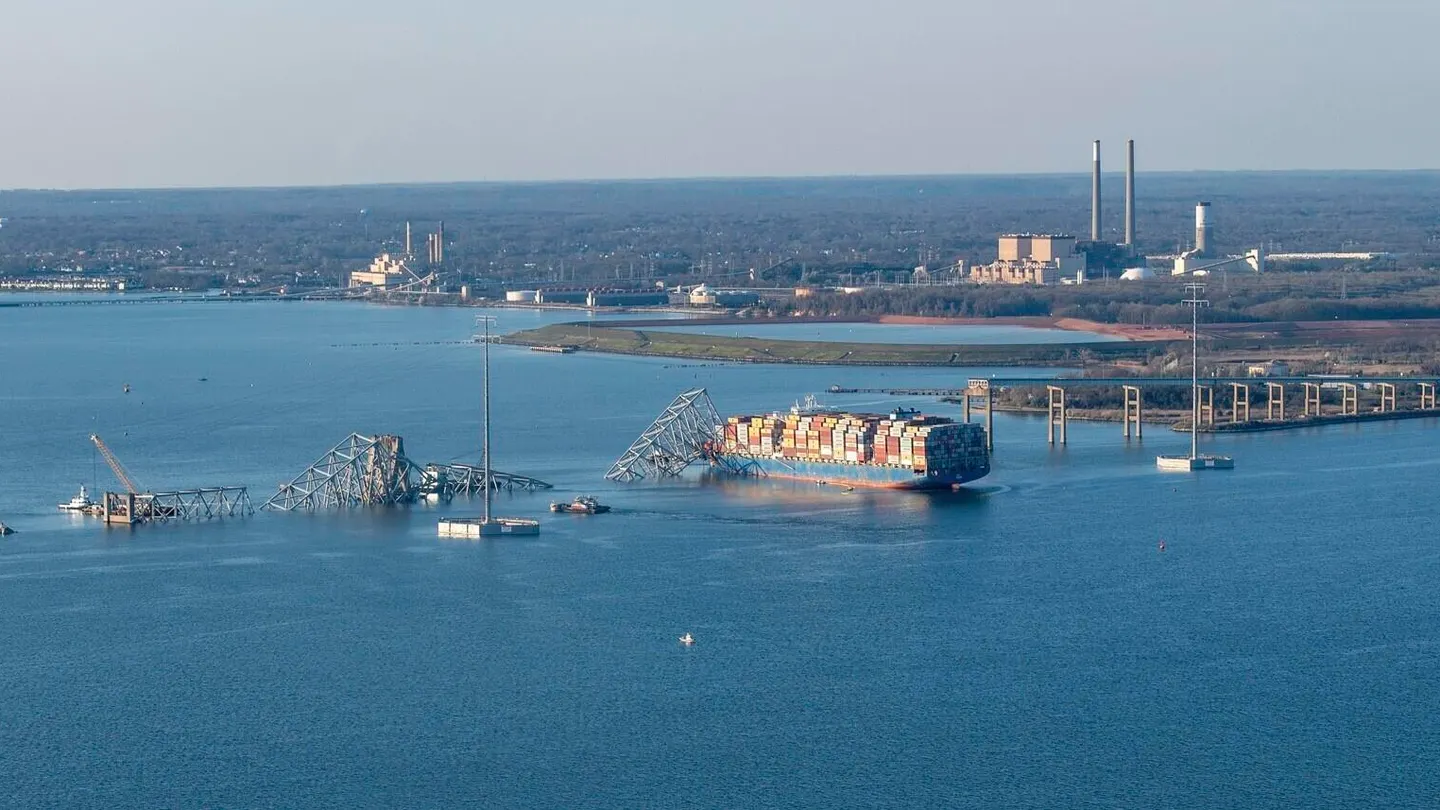This map from AgDay meteorologist Matt Yarasewick shows just how heavily the rain fell last week....
What Effects Will the Port of Baltimore Closure Have on Agriculture?

Machinery exporters feel the biggest pinch as shipping is diverted to other ports.
The closure of the Port of Baltimore, triggered by the Francis Scott Key Bridge collapse, has sent shockwaves through the roll-on roll-off (RoRo) industry. (RoRo refers to loading and unloading of wheeled equipment by driving it on and off as opposed to using cranes.) RoRo operations rely heavily on efficient port services for the seamless loading and unloading of cargo, and alternate ports will need to be improved to handle the increased heavy and agriculture equipment traffic from the Port of Baltimore.
Equipment exporters, particularly those with heavy machinery, feel the brunt of this disruption. Baltimore’s strategic location and specialized infrastructure for handling RoRo cargo made it a preferred choice for exporters. With the port’s closure, businesses are scrambling to find alternatives, facing uncertainties regarding retrieving their goods and additional costs due to delays.
Kubota, Mahindra, AGCO, Claas, and Deere all use the Port of Baltimore and have since rerouted cargo to other ports. Baltimore is heavily used because it is set up to import and export heavy equipment. Not every port can do what Baltimore can, and many shipments have been rerouted to ports in Georgia, which also play a significant role in the RoRo of heavy equipment. So far, no manufacturer has expressed concern about delays in incoming equipment to the U.S. or increases in costs to the end user due to the shift in ports.
Short-term issues
As the closure drags on, cargo storage costs within the port skyrocket, compelling exporters to rethink their logistics strategies. This forced reconsideration of logistics causes exporters to face additional expenses and coordination complexities in retrieving their goods. The uncertainty surrounding the duration of the port closure adds another layer of complexity, necessitating agile decision-making to mitigate potential losses.
The diversion of RoRo ships to alternative ports creates short-term bottlenecks and congestion, particularly during peak periods. Inbound vessels may face two-to-three-week delays as ports adjust to the increased traffic and cargo volume. The sudden influx of RoRo vessels strains existing infrastructure and port operations, leading to longer berthing times and slower turnaround times for cargo. Delays ripple through the supply chain, affecting exporters and importers awaiting timely deliveries. The resulting uncertainty pressures businesses to adapt quickly and find alternative solutions to minimize disruptions.
Long-term impact
While short-term disruptions may eventually ease as carriers implement contingency plans and alternative routes, the long-term impact on the RoRo industry is uncertain. The closure of the Baltimore port disrupts established logistics chains, compelling exporters and importers to reassess their strategies and explore new avenues for transporting goods. The prolonged closure could have profound implications for cargo flow and distribution networks, potentially reshaping future trade routes and port preferences. Until the Baltimore port fully resumes operations, businesses must navigate a landscape fraught with uncertainties, balancing the need for operational continuity with the challenges posed by the ongoing disruption.
Restoration timeline
U.S. Army Corps of Engineers (USACE), Baltimore District, is diligently working to clear the wreckage along the Fort McHenry Channel. “Thanks to the exhaustive work of the Unified Command during the last two weeks, including underwater surveys and detailed structural analysis of the wreckage, we've developed a better understanding of the immense and complex work that lies ahead,” said Lt. Gen Scott A. Spellmon, Army Corp of Engineers, in a press release. “A fully opened federal channel remains our primary goal, and we will carry out this work with care and precision, with safety as our chief priority.”
Collaborative studies and assessments aim to restore safe navigation to the Port of Baltimore, with a tentative timeline outlining the reopening of limited access channels by the end of April. USACE engineers aim to reopen the permanent, 700-foot-wide by 50-foot-deep federal navigation channel by the end of May, restoring port access to normal capacity. “These are ambitious timelines that may still be impacted by significant adverse weather conditions or changes in the complexity of the wreckage,” adds Spellmon.
EDITOR’S TAKE:
Two words would serve to decipher this article – uncertainty and workarounds. Uncertainty about the cleanup and timeline for the full restoration of shipping lanes and workarounds until those lanes are opened. Even when the shipping lanes are restored, some importers and exporters may permanently abandon Baltimore. However, based on the article, the impact actually sounds more short-lived with the exception of rebuilding a bridge. We always choose to be optimistic! This might be a good time to focus a little more attention on your fixed ops – parts and service. Farmers/ranchers may decide to postpone a new purchase until after planting and calving season. They might appreciate someone actually attending to their needs with specials on oil changes, new Michelin tires or that new battery on a moment’s notice. There is no reason to send their business to NAPA or Autozone!
Tags:
2024







